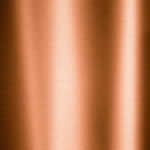Copper alloys are widely used due to their excellent electrical
and thermal conductivities, outstanding corrosion resistance, and
ease of fabrication. Copper alloys are generally nonmagnetic. Pure
copper is used extensively for electrical wire and cable, electrical contacts and various other parts that are required to pass
electrical current. The most common copper alloys are the brasses and the bronzes. The element symbol of copper is Cu.
Following table shows density of copper alloys including brass and bronze.
|
Density of Copper (Cu) Alloys |

|
|
Copper Alloy No (and Name) |
Density |
|
g/cm3 |
kg/m3 |
lb/in3 |
|
C10200 ( oxygen-free copper) |
8.94 |
8941 |
0.323 |
|
C11000 (electrolytic tough pitch copper) |
8.89 |
8885 |
0.321 |
|
C17200 (beryllium - copper) |
8.25 |
8249 |
0.298 |
|
C22000 (commercial bronze, 90%) |
8.80 |
8802 |
0.318 |
|
C23000 (red brass, 85%) |
8.75 |
8747 |
0.316 |
|
C26000 (cartridge brass) |
8.53 |
8525 |
0.308 |
|
C27000 (yellow brass) |
8.47 |
8470 |
0.306 |
|
C36000 (free - cutting brass) |
8.50 |
8497 |
0.307 |
|
C60800 (aluminum bronze, 5%) |
8.17 |
8166 |
0.295 |
|
C71500 (copper - nickel, 30%) |
8.94 |
8941 |
0.323 |
|
C81500 (Chrome copper) |
8.82 |
8820 |
0.319 |
|
C86300 (manganese brass) |
7.70 |
7695 |
0.278 |
|
C93200 (bearing bronze) |
8.91 |
8913 |
0.322 |
|
C95500 (aluminum bronze) |
7.53 |
7529 |
0.272 |
|
C96600 (beryllium cupro-nickel) |
8.80 |
8800 |
0.318 |